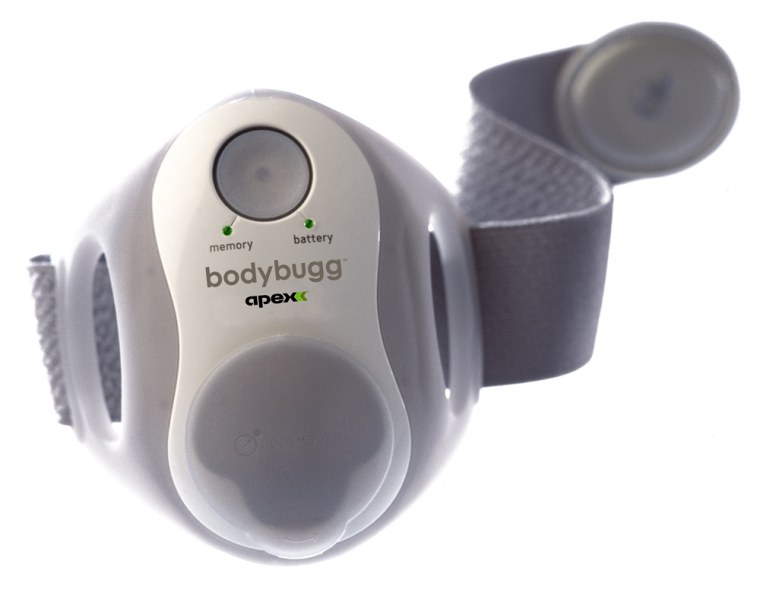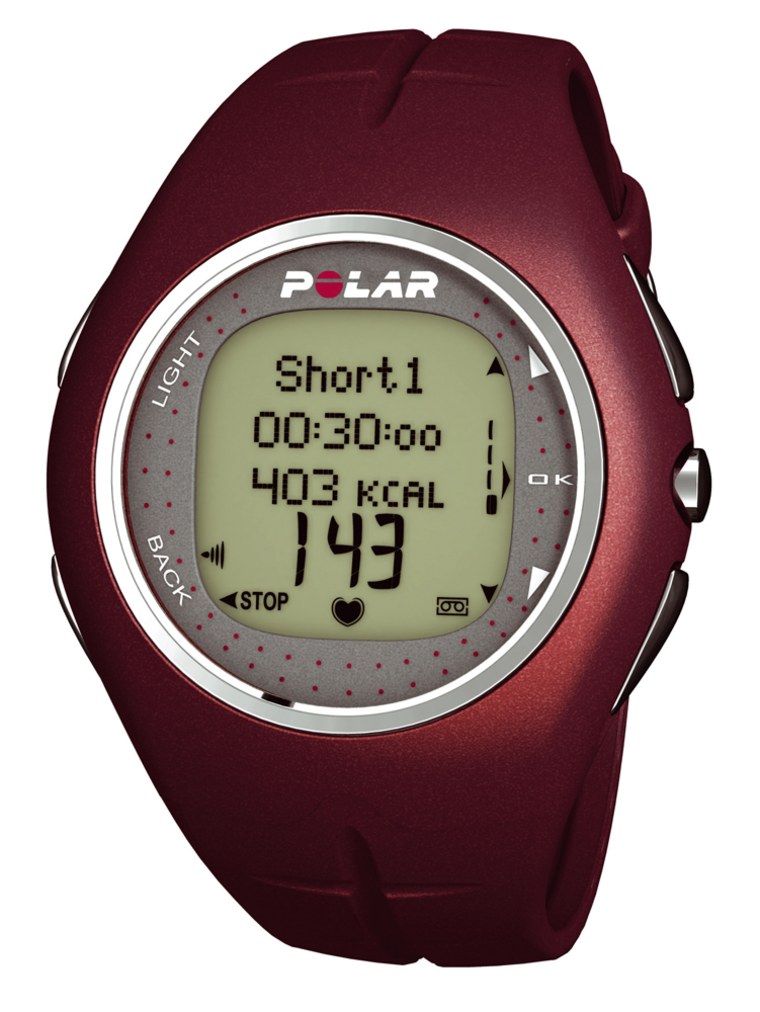The body has many ways of signaling a good workout — the sweat, the racing heart, the muscle burn. But some of us need hard data.
For the detail-oriented exerciser, a range of gadgets promise to keep you up to speed on your body’s internal workings, and even create a personal sports lab of sorts.
Heart rate monitors, in the form of a wristwatch, are among the most useful tools for everyday exercisers and hard-core athletes alike, as they tell you how intensely you’re working. Though treadmills and stationary bikes are typically equipped with heart rate monitors, the watches are still useful as they allow your arms to swing freely. Plus, many have nifty features.
According to fitness expert Gregory Florez, a spokesman for the American Council on Exercise, at a minimum you want an easy-to-read display, a chest strap for accuracy and alarms that alert you when you’re above or below your target heart rate.
You can get these features for less than $100. The Polar A3 and CardioSport GO10 (both $80) are two top models that fit the bill.
But many models are closer to mini personal trainers, or physiology labs. The Polar F11 is a mid-priced model ($160) that among other things counts calories, measures your fitness level and automatically determines what your target heart rate should be for a given workout. You can transfer the exercise data to the Polar Web service for review and analysis.
For a bigger price tag, the Timex Bodylink system ($275-$350) combines a heart rate monitor, speed and distance sensor and data recorder that allows you to upload your stats to the included software to track your fitness progress. Granted, you won’t need the GPS technology indoors, but it’s a must-have if you hit the trails.
Some other devices also want to keep you entertained. The Nike-Philips MP3RUN ($130) lets you listen to your favorite tunes while a wireless clip attached to your sneaker feeds the device speed and distance data that can be uploaded to a Web-based training log.
But while there are devices that perform many jobs at once, there’s also something to be said for simplicity, Florez points out. If a gadget fires too much information at you, he says, it can actually be counterproductive.
And, of course, getting separate gadgets for different purposes lets you buy more cool gear.
If your sport is cycling, serious cycling, then the pricey SRM Amateur Road Powermeter system ($2,100) may be worth the investment. Power refers to the amount of work the body does in a given time, and power monitoring is a more precise indicator of exercise intensity than heart rate monitoring is. The SRM power meter attaches to your bike wheel and can be used indoors, with your bike mounted to a trainer. The data then can be transmitted to included software.
But if you’d rather lose a spare tire than win a triathlon, a device that focuses on calorie-burning may be best.

The Bodybugg, recently introduced by Apex Fitness, has an armband that measures your calorie output by monitoring your movement, temperature and sweat. You load the data onto the Bodybugg Web interface, which helps you devise a weight-loss strategy. It’s sold through fitness centers, along with personal trainer sessions, so prices vary based on location. It can also be purchased, for $500, as a three-month program that includes the armband, Web service and four telephone sessions with a trainer.
If you’re interested in tracking body fat as well, Tanita’s 682 digital scale is a fairly cheap investment ($90). It calculates your body fat percentage, via electrodes in the footpads, and will store information for up to four people. (Non-Bodybugg owners can also use it to count calories.)
Finally, it seems that “smart” clothing is no joke. There’s already the Adidas 1 running shoe ($250), which boasts a microprocessor that decides when the impact is too much for you and adjusts the shoe’s cushioning accordingly. And UK researchers are developing a line of clothing made from biometric material that regulates body temperature. Tiny spikes in the outer layer sense when you’re sweating and then open up to let cool air in. Maybe next year’s hot (or cool) gift?
